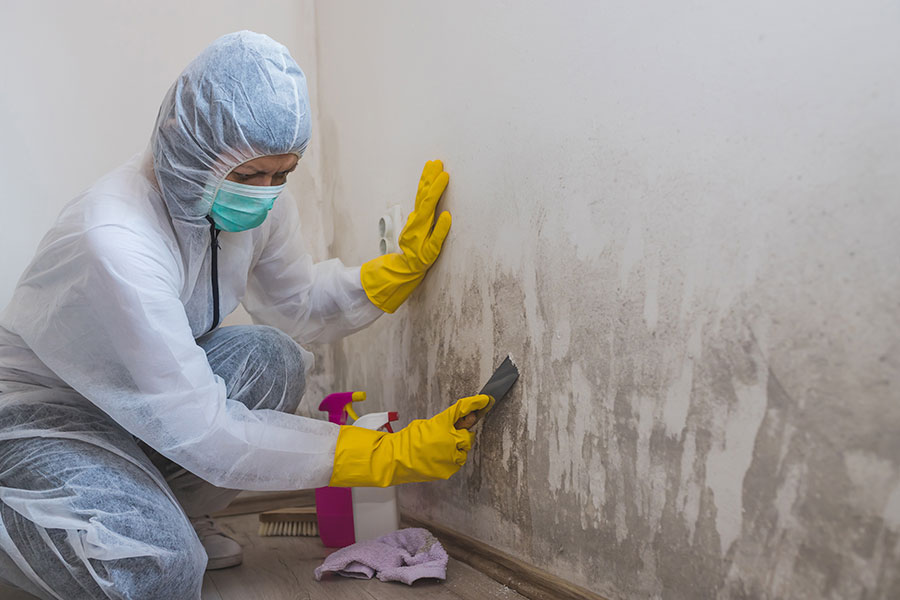Mold contamination is a common problem for homeowners and building owners. Mold can grow in many areas of your property, including walls, ceilings, floors, and hidden spaces. Identifying the signs and symptoms of mold contamination is crucial for early detection and remediation. We explore the common signs and symptoms of mold contamination in homes and buildings, providing valuable insights to help you address your mold issue effectively.
Understanding Mold Contamination
Mold is a type of fungus that thrives in damp and humid environments. It reproduces by releasing spores into the air, which can spread and settle on surfaces. When mold spores find suitable conditions—moisture, organic matter, and poor ventilation—they grow into colonies that pose health risks and structural damage to buildings if left unattended.
Common Signs and Symptoms of Mold Contamination
1. Musty Odor
A persistent musty odor is one of the easiest ways to detect mold. The smell, often described as damp, earthy, or similar to wet socks, may linger in affected areas. If you notice this odor, investigate further to identify the source and address potential mold issues promptly.
2. Visible Mold Growth
Visible mold appears in various colors, such as black, green, white, or orange, and may resemble fuzzy patches, stains, or discoloration on walls, ceilings, or floors. Areas prone to moisture, like bathrooms and kitchens, are common spots for growth. If you see visible mold, contact a professional to identify the type of mold and plan for removal.
3. Water Intrusion or History of Moisture Problems
Leaks from pipes, roofs, or windows create ideal conditions for mold. High humidity or poor ventilation also promotes growth. If your property has a history of water-related issues, consider scheduling a mold inspection.
4. Allergic Reactions
Mold spores can trigger allergic symptoms like sneezing, coughing, itchy eyes, nasal congestion, or throat irritation. Symptoms often worsen in specific rooms. If you notice these symptoms, mold contamination could be the cause.
5. Respiratory Issues
Mold exposure can cause respiratory problems, including coughing, wheezing, shortness of breath, and chest tightness. If symptoms worsen in certain areas of your property, investigate for potential mold.
6. Physical Discomfort
Symptoms such as headaches, fatigue, dizziness, nausea, and skin irritation may indicate mold contamination. Pay attention to unexplained discomforts that occur in specific areas of the property.
7. Worsening of Asthma or Allergies
Mold spores can worsen asthma and allergy symptoms, triggering attacks or flare-ups. If symptoms increase in a specific area, mold contamination may be the culprit.
8. Peeling or Discoloration of Paint
Mold can cause peeling, bubbling, or discoloration of paint, especially on walls and ceilings. Inspect areas where paint appears compromised for mold.
9. Warped or Damaged Materials
Moist environments allow mold to weaken walls, floors, or surfaces, leading to warping or damage. Inspect such areas for mold growth and address underlying issues.
10. Excessive Condensation
High humidity often leads to condensation on windows or other surfaces. This can create a favorable environment for mold. Investigate and resolve moisture issues to prevent contamination.
11. Stuffy or Clammy Indoor Air
Mold-contaminated spaces often feel stuffy or clammy. If your indoor air is consistently humid or uncomfortable, mold may be the cause.
12. Presence of Mold-Feeding Insects
Insects like fungus gnats or mold mites are attracted to mold. If you notice an increase in these pests, investigate for potential mold growth.
13. Musty-Smelling HVAC System
Frequent clogs or a persistent musty smell from your HVAC system could indicate mold in the ductwork. This can lead to widespread contamination. Schedule a professional inspection and cleaning if needed.
14. Discoloration or Stains on Ceilings
Ceiling stains, especially in areas like bathrooms or where roof leaks occur, are often signs of mold. Investigate any unusual spots to determine the cause.
Recognizing the signs of mold contamination in homes and buildings is crucial for maintaining a healthy environment. Pay attention to musty odors, visible growth, allergic reactions, and other indicators to address mold issues promptly. Prevent future problems by controlling moisture levels and fixing leaks.
If you suspect significant or hidden mold contamination, Rarefied Air Environmental can help.Our technicians provide mold inspections, testing, and guidance for cleanup plans.
Contact Rarefied Air Environmental today to schedule mold testing or learn about our full range of environmental testing services in San Diego.

